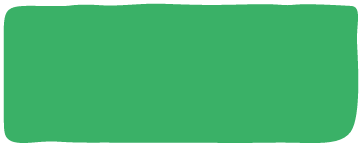Cart (0)
There is nothing in your bag.

Let's add some items.
There is nothing in your bag.

Let's add some items.
The World Health Organization recommends introducing solid foods when a baby is displaying all signs of readiness or at 6 months of age. Before solid foods are introduced, babies must be developmentally and physically ready to avoid choking accidents and to help them develop a positive relationship with food. The four signs of readiness are: good head and neck control, sitting upright independently, reaching and grabbing things, and showing an interest in food.
Don't worry about quantity. There are no specific guidelines on how much food your baby should eat. Let your baby decide the quantity they want to eat. Solid foods play a supplementary role, which means breast milk and formula are the primary and most important source of a toddler’s nutrition (till they’re 1). The gradual introduction of solid food alongside breast/formula feed is meant to encourage a baby’s social and motor skills and help them build a positive relationship with various kinds of food. Solid food is not meant as a replacement for breast/formula milk in babies under 1 year.
Have them sit with you during mealtimes. Even if they're not ready to eat yet, they can still be a part of the family mealtime by sitting on your lap or simply watching you eat. You can even give them a cup with breast milk or a little bit of formula in it, or some plastic toys that look like vegetables or other types of food. You can also put cups, bowls, and spoons in front of them, so they can play with them and explore different textures.
It's a common misconception that teeth are necessary for chewing, but your baby's gums are strong enough to handle soft foods. Even though their milk teeth are just below the surface of their gums, they are perfectly capable of chewing! So, while you might want to avoid giving them hard foods like raw carrots, steamed ones can be a great way to give your little one a chance to practice their chewing skills. In fact their molars (the teeth used for chewing) come only around 14 months of age. Don't worry if your baby doesn't have all their teeth yet; they can still develop their chewing ability and it's vital to start early to help them learn!
Your baby’s first foods should contain nutrients like iron, calcium, selenium, zinc, choline, Vitamin D/A/C, prebiotics and probiotics, healthy fats, and protein. Our expert-recommended first foods include moong dal, khichdi, ragi, bananas, bell peppers, red lentil, kidney beans, curd, eggs, pumpkin, chickpeas, mango, peanuts, amaranth, sesame seeds, pearl millet, chicken liver or drumstick and pomfret.
We recommend feeding solid meals after 45 minutes to an hour after the baby has breast milk or formula. At this point, babies are usually in a good mood (not cranky) and have room in their tummy to try new flavors. Remember that solid foods should be given in addition to, not in place of, breast milk or formula.
Give solids earlier in the day: Offer solid foods in the first half of the day so you have time to observe your baby for any potential allergic reactions or intolerances.
The World Health Organization (WHO) strongly advises against giving water to babies under 6 months of age. At this stage, their kidneys are not ready to handle water and drinking water can lead to reduced milk intake. After your baby reaches the 6-month milestone, small quantities of water can be gradually introduced. While breast milk or formula should still be the primary source of hydration, giving water may be beneficial in hot climates, during constipation and after meals to rinse the mouth and prevent cavities. As per WHO guidelines, babies between 7-9 months can be given 60 to 120 ml of water and babies between 9-12 months can be given up to 230 ml of water. If your baby has 4-6 wet diapers in a 24-hour period then they are likely adequately hydrated and do not require additional water.
“Finger foods” means small pieces of food that a baby (or toddler) can feed themselves. It's a common misconception among parents that they should wait for their babies to have teeth before introducing finger foods. However, babies have strong gums and jaws, and with consistent practice, they can learn to explore and manage finger foods effectively. As long as the finger foods are soft enough for your baby to chew using their gums and jaw, they will handle them well.
To help your baby develop healthy eating habits and create a positive meal environment, first ensure that your baby is sitting in a comfortable upright position during meals to avoid choking risks. Avoid snacks in between meals. Avoid distractions phones or devices at mealtimes to help babies savour the food and its textures. Children cannot sit in one place due to a short attention span so avoid prolonging the mealtime beyond 15 minutes. Finally, if your baby is giving a clear cue that they do not want to eat by shutting their mouth or turning their face away, it’s best to not force-feed them. Give your child the freedom to eat what they want, so they learn to say no to food when necessary.
While most people can eat a wide variety of foods without any problems, some individuals have allergies to specific foods. When you start giving your baby new foods that are also common allergens (e.g., eggs, peanuts, fish), try them one at a time in small quantities. Avoid introducing allergens during illness. It's advisable to start with foods that you regularly consume as a family such as wheat and dairy. Offer allergenic foods during the first half of the day to observe any reactions. Keep an eye on your baby for any signs like rashes, hives, trouble breathing, or tummy problems. Most allergic reactions occur within the first 15-20 minutes. Consult your doctor if you're worried about potential allergies and if your baby is at high risk for allergies.
Gagging is a protective reflex that occurs when food triggers the back of the throat where the airway is. This reflex helps to bring food up and stop the swallowing reflex, protecting the baby from choking (choking is very dangerous). While gagging seems scary, it's a natural response that helps babies move food from the back of the throat to the front of their mouth, protecting them from choking (which is when food gets lodged in the throat). When choking happens, babies find it hard to breathe and it’s important to act quickly and seek help.
When you're making food for your baby, be careful about foods that could make them choke. Don't give them small, hard, round, sticky, or slippery foods. Cut their food into age-appropriate pieces and always keep an eye on them while they eat to stop any choking. Make sure your baby is developmentally ready for solids, and don't rush into starting solids too early. Always be present and keep your baby seated directly in front of you to ensure you can see their face at all times while they are eating. Ensure your baby is sitting upright during mealtimes and avoid reclining positions and minimize distractions like toys, TV, or phones. Never put finger foods in your baby's mouth or attempt to extract the food out of their mouth. Finally, take an infant CPR class to know how to respond in case of choking.
The broader indicators of whether your baby is eating sufficiently: steady weight gain, growth curve, regular urination, stool consistency, post-meal contentment, and feeding schedule. It’s okay if your baby eats more or less on some days. To understand if your baby is eating enough, pay attention to their hunger and fullness cues, which are clear indicators of their appetite. Here are signs that your baby is hungry: they are reaching for food; they lean forward, open their mouth, and display eagerness to eat; they make sounds or gestures to express their enthusiasm for eating; and they are actively involved such as grabbing the food or spoon. Here are some signs that your baby is full and you can stop the meal: they are turning their head away from food, they eat slowly after an initial quick start to the meal, they are distracted, they are playing with food instead of eating, and crying, shaking their head, or refusing to open the mouth.
Chewing is an important developmental skill that we want our babies to acquire. It's beneficial to introduce finger foods around 6 months, or when you begin introducing solids. During this stage, babies can instinctively learn and develop their chewing skills. Chewing is a skill that requires practice and patience. Each baby progresses at their own pace, so it's essential to remain calm and supportive. To encourage chewing, you can give your little one teethers, stick-shaped teething biscuits, toys and foods, or homemade carrot, cucumber or apple sticks. Allow your baby to put safe and clean objects in their mouth and demonstrate chewing actions in front of them. If you have been giving purees, gradually transition to soft and lumpy foods such as bananas or boiled carrots, and offer a variety of flavours and textures.






Alert me if this item is restocked.
We often restock popular items or they may be returned by the other customers. If you would like to be notified when this happens just enter your details below.
We respect your privacy and don't share your email with anybody.
Alert me if this item is restocked
Thank you, we have now received and recorded your request to be notified should be restocked.
We will only use your email for this purpose.
We have cancelled your request.


